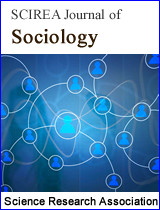Essence and its representation: Kripke, Quine and Wittgenstein
DOI: 10.54647/sociology841107 81 Downloads 14761 Views
Author(s)
Abstract
The simplest way to characterize essences is to say that it makes a thing what it is. An object must have something very basic, unique, and intrinsic and more fundamental by which we can identify an object as it is. We always have a tendency to hold on something stable and discarding what is accidental and unstable. That means there is a neat dichotomy between the core vs the periphery, the central vs the margin, the permanent vs the temporary, the nec vs the possibility, the inner vs the outer. That means an object must have some properties that are essential for it and some other accidental. Now, question arises whether this basic property belongs to a particular individual or to a group. Is it unique to just one thing or these are mere concepts or ideas that are sharable or communicable or repetitive properties, or that is logically instantiable in a plurality of individuals. An individual unlike a class is spatio-temporally cohesive, it forms a unified singular unit; and hence the way in which an essence can be said to bring the spatio-temporally scattered individuals under a fixed and unitary enclosure cannot meaningfully be applied to an individual itself. And yet the individual in spite of its apparently compact unity throws up a tension between its essence and accidents. With inanimate objects the shape, size and colour may change, leaving the constituent matter intact. question arises whether it is a bare particular that persists and underlies through the change. Or whether it is a composite of all qualities, combination of all properties like both essential and accidental . Some philosophers will say we do not require any properties to identify the object in the actual world as well as in the possible world. Object itself directly enters into our identification in the actual world as well as in the possible world via properties. But some will say essence is commonly shareable property, we find essence in some fixed suchness. On the other hand, some of them tried to emphasize on the internal structure of language which is related to the reality of the world. By analyzing the ordinary language we can reduce it into its constituting parts and ultimately we arrive at an ideal language that cannot be further analyzed, they are atomic in nature, there is an one to one relation between the name and the object in reality.
Keywords
Aristotelian essence, Quine, Kripke Plantinga and Wittgenstein
Cite this paper
Sagarika Datta,
Essence and its representation: Kripke, Quine and Wittgenstein
, SCIREA Journal of Sociology.
Volume 7, Issue 4, August 2023 | PP. 222-234.
10.54647/sociology841107
References
| [ 1 ] | Adams, R. M, Primitive Thisness and Primitive Identity, The Journal of Philosophy, 1979 |
| [ 2 ] | Adams, R. M Theories of Actuality , University of California, Los Angeles, 1979 |
| [ 3 ] | Ayer, A. J, Language, Truth and Logic, Dover Press, New York, 1936 |
| [ 4 ] | Baker G. P & Hacker P. M. S., Wittgenstein Understanding and Meaning, An Analytical Commentary on the Philosophical Investigations, Blackwell, Oxford, 1980 |
| [ 5 ] | Barnes, J, The Complete Works of Aristotle ,Princeton University Press, New Jersey, 1984 |
| [ 6 ] | Christopher S, Aristotle, Routledge, New York, 2007 |
| [ 7 ] | Cohen S. M, ‘Essentialism in Aristotle’, The Review of Metaphysics, vol-31, Philosophy Education Society, Britain, 1978 |
| [ 8 ] | David C, Aristotle on Meaning and Essence, Claredon Press, Oxford, 2000 |
| [ 9 ] | David K, Demonstratives, Oxford University Press, Oxford, 1989 |
| [ 10 ] | Dummett, M, Frege Philosophy of Language, London, Duckworth, 1973 Publishers, Massachusetts, 1994 |
| [ 11 ] | Kripke S,Naming and Necessity’, Harvard University Press Cambridge, Massachusetts 1980 |
| [ 12 ] | Kenny A, ‘Tractatus Logico Philosophicus’ The Wittgenstein Reader Blackwell Publishers, Massachusetts, 1994 |
| [ 13 ] | Wittgenstein L, Philosophical Investigations trans. G.E.M.Anscombe, Oxford University Press,New York, 1953 |
| [ 14 ] | Wittgenstein L, The Blue and The Brown Books , R. Rhees, Basil Blackwell, Oxford, 1975 |
| [ 15 ] | Quine W.V.O Reference and Modality,From a Logical Point of View, Harvard University Press, Cambridge, 1980 |

